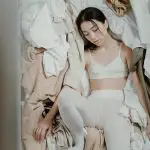Wondering whether to choose tapered or straight fabrics for your project?
Did you know that 67% of successful crafting projects involve the careful selection of fabric type? Understanding the nuances between tapered and straight fabrics is crucial for mastering your crafting endeavors.
Tapered fabrics offer unique advantages, while straight fabrics have their own set of benefits. The impact of fabric choice on the finished product is significant.
By delving into the characteristics and considerations of each fabric type, you can empower yourself to make informed decisions that elevate the quality of your creations.
Let's explore the differences and advantages to help you confidently choose the best fabric for your next project.
Key Takeaways
- Tapered fabrics offer a contoured fit and enhanced fabric drape, creating a more structured appearance.
- Straight fabrics provide a smoother and more flowing look with precise measurements and straight seams.
- The choice between tapered and straight fabrics impacts the garment's drape and overall appearance.
- Tapered fabrics allow for versatile draping options and can create dynamic and flattering silhouettes, while straight fabrics are versatile for a wide range of projects and offer clean lines and sharp edges.
Understanding Tapered Fabrics
When working on your project, you should consider using tapered fabrics for achieving a more tailored and precise fit. Understanding fabric construction and its suitability for your specific project is crucial.
Tapered fabrics are designed to gradually narrow in width, offering several benefits compared to straight fabrics. The construction of tapered fabrics allows for a more contoured and snug fit, making them ideal for garments that require a close silhouette, such as tailored suits, fitted dresses, or structured blazers.
Additionally, tapered fabrics provide enhanced fabric drape, which refers to how the fabric hangs and moves against the body. This improved drape adds an element of sophistication to the finished garment, elevating its overall aesthetic.
Characteristics of Straight Fabrics
Before selecting fabrics for your project, it's essential to understand the characteristics of straight fabrics and how they differ from tapered fabrics. Straight fabrics have distinct features that make them suitable for various projects. Here are the key fabric characteristics and project suitability considerations to keep in mind:
- Uniform Width: Straight fabrics are consistent in width from one end to the other, making them ideal for projects that require straight lines and uniformity, such as curtains, tablecloths, and quilting.
- Versatility: These fabrics are highly versatile and can be used for a wide range of projects, including garments, home decor, and crafts. Their consistent width and stability make them suitable for both intricate and straightforward designs.
- Ease of Cutting and Sewing: Straight fabrics are easier to cut and sew due to their uniformity, making them a preferred choice for both beginners and experienced sewers. They're particularly well-suited for projects that involve precise measurements and straight seams, ensuring a professional and polished result.
Understanding these fabric characteristics and project suitability factors will help you make informed decisions when choosing the right fabric for your next project.
Impact on Finished Product
To achieve the desired fit and drape in your finished product, consider how the choice between tapered and straight fabrics will influence the overall look and feel. The impact on texture and fabric choice is significant when it comes to the finished product.
Tapered fabrics, with their natural narrowing, can create a more form-fitting and structured appearance in the final garment. This can be ideal for tailored pieces or items where a defined silhouette is desired.
On the other hand, straight fabrics offer a more uniform and consistent texture throughout the garment, which can result in a smoother and more flowing look. The choice between these fabric types can affect how the garment drapes on the body and how the texture interacts with the design details.
Consider the desired outcome of your project and how the fabric choice will impact the overall texture and appearance. Whether you want a structured, tailored look with tapered fabrics or a more flowing, uniform drape with straight fabrics, understanding the impact on the finished product is crucial in making the right choice for your project.
Advantages of Tapered Fabrics
When choosing tapered fabrics for your project, you'll enjoy versatile draping options that allow for unique and dynamic designs.
The tapered fabric also provides enhanced visual interest, adding depth and dimension to your finished piece.
Additionally, the tapered cut can help create a flattering silhouette, making it a great choice for various body types.
Versatile Draping Options
For versatile draping options, tapered fabrics offer distinct advantages for your project. When working with tapered fabrics, you can achieve various fabric manipulations and styling techniques, allowing for intricate and artistic designs.
The unique drape of tapered fabrics lends itself well to creative draping techniques, enhancing the overall design aesthetics of your project. Tapered fabrics provide the flexibility to create dynamic silhouettes, making them ideal for garments or decorative elements that require fluidity and movement.
Additionally, the natural flow of tapered fabrics allows for graceful and elegant draping, enabling you to experiment with different styles and shapes. Overall, the versatility of tapered fabrics opens up a myriad of possibilities for innovative and visually captivating draping options.
Enhanced Visual Interest
When working with tapered fabrics, you can achieve enhanced visual interest through the dynamic interplay of light and shadow, adding depth and dimension to your designs. The gradual shift in width creates a captivating visual appeal, allowing for more intricate fabric manipulation.
The tapered fabric's ability to create varying levels of fullness and drape results in visually striking garments or home decor pieces. By strategically manipulating the fabric's shape, you can craft captivating silhouettes that capture attention and evoke a sense of movement.
Additionally, the unique way tapered fabrics fall and fold can create engaging textures and patterns, contributing to the overall visual intrigue of the finished piece.
Embracing tapered fabrics opens up a world of creative possibilities to elevate the visual interest of your projects.
Flattering Silhouette Creation
To achieve a flattering silhouette, tapered fabrics offer a dynamic way to accentuate your body's natural curves and create a sleek, tailored look.
When it comes to fabric selection for creating a flattering silhouette, tapered fabrics have distinct advantages:
- Contouring: Tapered fabrics naturally contour to your body, highlighting your curves and creating a streamlined appearance.
- Emphasizing Proportions: The narrowing of tapered fabrics at specific points can accentuate your waist, hips, or legs, enhancing your natural proportions.
- Versatility: Tapered fabrics can be used to create various garment styles, from fitted dresses to tailored pants, allowing you to customize your look while maintaining a flattering silhouette.
Benefits of Straight Fabrics
When choosing fabrics for your project, straight fabrics offer a consistent and predictable drape and flow. This makes them an excellent choice for garments that require a sleek and structured appearance. Here are some key benefits of using straight fabrics:
| Benefits of Straight Fabrics | |
|---|---|
| 1. Versatility | Straight fabrics are versatile and can be used for a wide range of projects, from tailored suits to simple blouses. |
| 2. Clean Lines | These fabrics are ideal for creating clean lines and sharp edges, making them perfect for structured garments and architectural designs. |
| 3. Ease of Sewing | Due to their uniform grain, straight fabrics are easier to cut and sew, resulting in fewer distortions and a neater finish. |
Choosing the Right Fabric Type
For your project, consider the fabric type carefully to ensure the desired outcome, whether you need a tapered or straight fabric. When choosing the right fabric type, there are a few key factors to keep in mind:
- Fabric Weight: The weight of the fabric can greatly impact the drape and overall look of your project. Lighter fabrics such as chiffon or silk are ideal for flowy, delicate designs, while heavier fabrics like wool or denim are better suited for structured garments or home decor projects.
- Color Selection: The color of the fabric is crucial in achieving the desired aesthetic for your project. Consider the mood and tone you want to convey, as well as how the color complements the overall design. Additionally, consider whether the fabric will be used for a statement piece or as a backdrop to other elements in the project.
- Durability and Maintenance: Depending on the intended use of the fabric, durability and maintenance are important considerations. Will the fabric be subjected to frequent washing or heavy wear? If so, choosing a fabric that's easy to care for and has good longevity is essential.
Considerations for Specific Projects
When choosing fabric for specific projects, consider the requirements and suitability of the material for the intended use. Pay attention to the fabric's drape and flow, as it can greatly impact the overall look and feel of the finished project.
Additionally, think about how easy or difficult the fabric will be to sew and construct for the particular design you have in mind.
Project Requirements and Suitability
You should consider your project's specific requirements and suitability when choosing between tapered and straight fabrics.
- Fabric Selection: Evaluate the texture, weight, and drape of both tapered and straight fabrics to determine which aligns best with your project's needs. Tapered fabrics often offer more stretch and flexibility, making them suitable for projects that require a snug fit or intricate detailing. On the other hand, straight fabrics may be more suitable for structured garments or projects where a clean, tailored look is desired.
- Project Suitability: Consider the nature of your project. If you're working on a form-fitting garment such as leggings or a bodycon dress, tapered fabrics might be the better choice. Conversely, if you're creating a structured blazer or a-line skirt, straight fabrics could be more suitable. Always consider the specific requirements and intended use of your project to make an informed decision.
Fabric Drape and Flow
Consider the specific project's requirements and desired outcome when evaluating the fabric's drape and flow for optimal suitability. Fabric weight and handling play a crucial role in determining how a fabric will drape, while fabric texture and movement affect its flow. For instance, heavier fabrics such as denim or wool can provide structured and defined draping, making them suitable for tailored garments or upholstery projects. On the other hand, lighter fabrics like silk or chiffon offer a more fluid and graceful drape, ideal for flowing dresses or curtains. To illustrate:
| Fabric Weight & Handling | Fabric Texture & Movement |
|---|---|
| Heavier fabrics offer structured draping | Lighter fabrics provide a more fluid drape |
| Suitable for tailored garments or upholstery projects | Ideal for flowing dresses or curtains |
Understanding these fabric characteristics will help you choose the most appropriate option for your specific project needs.
Sewing and Construction Ease
For your specific projects, it's important to assess the fabric's ease of sewing and construction to ensure efficient completion of your tasks. When considering sewing and construction ease, there are several key factors to keep in mind:
- Sewing Techniques: Different fabrics require different sewing techniques. For example, tapered fabrics might need careful handling when sewing curved seams, while straight fabrics may be easier to work with for structured garments.
- Fabric Handling: Consider how the fabric behaves during handling. Tapered fabrics may require more attention to ensure pattern matching and grain alignment, while straight fabrics may be more forgiving in this aspect.
- Construction Challenges: Anticipate potential construction challenges based on the fabric type. Tapered fabrics might present fitting issues, while straight fabrics may require attention to finishing details to ensure a polished final product.
Empowering Your Crafting Endeavors
Choosing the right fabric for your project can empower your crafting endeavors and elevate the quality of your finished piece. The fabric you select greatly influences the outcome of your project, impacting its drape, texture, and overall appearance.
When considering fabric selection, it's essential to align it with your crafting techniques. For instance, if you're working on a structured garment, a sturdy fabric like denim or wool would be more suitable, whereas for a flowing and delicate project, silk or chiffon would be a better choice.
Understanding the properties of different fabrics can enhance your crafting skills and enable you to experiment with new techniques. By expanding your knowledge of fabric types, you can confidently take on more complex projects and achieve superior results. Moreover, the right fabric can make the crafting process more enjoyable and efficient, allowing you to create with precision and finesse.
Ultimately, empowering your crafting endeavors through informed fabric selection enables you to realize your creative vision with finesse and mastery. It equips you with the tools to bring your ideas to life, elevating the standard of your craft and the satisfaction derived from the finished piece.
Frequently Asked Questions
Can Tapered Fabrics Be Used for Projects That Require a Lot of Structure, Such as Tailored Jackets or Structured Dresses?
Yes, tapered fabrics can be used for structured projects like tailored jackets or structured dresses. They are versatile and can be manipulated with sewing techniques to achieve a fitted look. Straight fabrics may require more manipulation.
How Do Straight Fabrics Compare in Terms of Drape and Flow Compared to Tapered Fabrics?
When it comes to drape and flow, straight fabrics offer a more uniform and consistent appearance. They may be less prone to fabric fraying and unraveling compared to tapered fabrics, making them ideal for projects requiring structure and stability.
Are There Any Specific Sewing Techniques or Considerations That Need to Be Taken Into Account When Working With Tapered Fabrics?
When sewing with tapered fabrics, consider specific sewing techniques for fabric manipulation. Ensure proper fabric handling to maintain the intended shape. These considerations are crucial in achieving a precise and polished final product.
Can Straight Fabrics Be Used for Projects That Require a More Fitted or Contoured Look, Such as Swimwear or Athletic Wear?
Yes, straight fabrics can be used for projects requiring a more fitted look like swimwear and athletic wear. They offer stability and can be manipulated to create contoured designs, ensuring a snug and tailored fit.
Do Tapered Fabrics Have a Higher Tendency to Fray or Unravel Compared to Straight Fabrics?
Tapered fabrics generally have a higher fraying tendency due to their fabric structure. With precise sewing techniques, you can minimize fraying and unraveling. Consider using fray-preventing products and reinforcing edges to maintain the fabric's integrity.
- Is Organza Soft or Stiff? - April 23, 2024
- Is Organza More Expensive Than Silk? - April 23, 2024
- What Is Organza Vs Chiffon? - April 23, 2024






